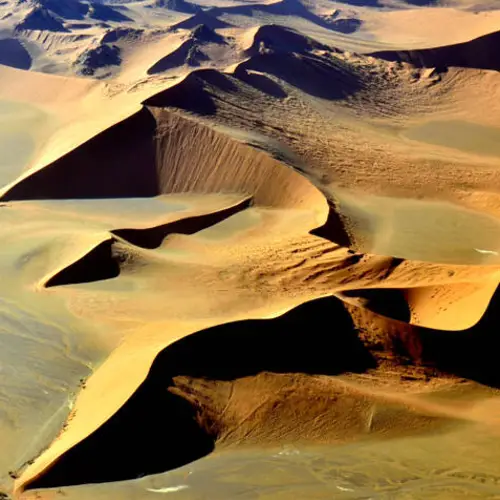1 of 42
Perhaps more than any other factor, Socotra's trees account for the island's unique allure.
Above, a bottle tree grows out of the rocky terrain along the coast.Rod Waddington/Flickr
2 of 42
That coastline — lined with massive cliffs looking down over water so turquoise it's almost neon — is just the first of Socotra's many, impossibly varied landscapes. Valerian Guillot/Flickr
3 of 42
Beyond the coastal cliffs, you'll find craggy, imposing mountains and plateaus, many of which (including the one above) conceal vast caverns.Rod Waddington/Flickr
4 of 42
Inside these caves — like the Hawk Cave in Hala (above) — you can venture down to depths as great as 1,000 meters. Wikimedia Commons
5 of 42
Back outside the caves and down the mountains, you'll set out upon extensive sand dunes like little deserts unto themselves.
Above: The Noget Sand Dunes.Valerian Guillot/Flickr
6 of 42
But whether it's the dunes, the mountains, the cliffs, or the caves, Socotra is home to some of the most utterly alien landscapes that can be found here on Earth.Rod Waddington/Flickr
7 of 42
Equally alien, however, are the island's endemic trees. And perhaps even more distinctive than the bottle tree is the dragon's blood tree (above).KHALED FAZAA/AFP/Getty Images
8 of 42
Named for its vividly red sap, the dragon's blood tree has become the symbol of Socotra's unique beauty.Rod Waddington/Flickr
9 of 42
The red sap produced by the tree has become known the world over, and sought after since ancient times for uses ranging from ritual magic to breath freshener to lipstick.HopeHill/Flickr
10 of 42
Because of the dragon's blood tree's commercial uses, and because of deforestation resulting from Socotra's development more generally, these trees are suffering. Conservation efforts currently aim to protect the tree's habitat and to restrict commercial usage -- initiatives that have met with some success thus far.KHALED FAZAA/AFP/Getty Images
11 of 42
While neither as large nor as fantastically named as the dragon's blood tree, the bottle tree might just look even more extraterrestrial. With its unique shape and leaves allowing it to retain moisture in especially dry climates, this tree can grow right up out of the rocks. Rod Waddington/Flickr
12 of 42
Small bottle trees dot the rocky landscape, sometimes surrounding the larger Frankincense trees (center).Rod Waddington/Flickr
13 of 42
The Frankincense tree, between its many variations, has been prized since ancient times for its aromatic resin used in incense and perfumes.Rod Waddington/Flickr
14 of 42
Not all of Socotra's plant life is merely tan and green, however. The Adenium socotranum succulent, for one, produces bright pink flowers that stand out all the more against the surrounding landscape.
Because of its rarity, size (15 feet), and difficulty of cultivation (decades of working and waiting), this plant has become highly esteemed among many horticulturalists.Valerian Guillot/Flickr
15 of 42
As eye-popping as Socotra's plants can be, the island's diverse, bizarre animal population is just as fascinating.
Above, an Egyptian vulture flies low over the beach.HopeHill/Flickr
16 of 42
The Egyptian vulture, for one, while not endemic to Socotra, is unknown to the New World, and found only in the Middle East and India, central Africa, and small sections of southern Europe.Rod Waddington/Flickr
17 of 42
This distinctive bird, with a legacy that goes back to Ancient Egypt, is even known for its use of tools (namely, using stones to crack eggs), an extraordinary rarity in the animal kingdom. Rod Waddington/Flickr
18 of 42
While not as large or imposing as the Egyptian vulture, the Socotran starling is one of the island's endemic species. Although its cousins can be found throughout most of the world, this particular variety can be found only here.Rod Waddington/Flickr
19 of 42
Even smaller than the starling among Socotra's winged creatures is the Bicyclus anynana butterfly. And like the starling, this butterfly has cousins all over the world, yet one special variety only found on Socotra.
Some of these butterflies have been known to engage in a practice called mud puddling, in which they'll obtain their nutrients by sucking them up, so to speak, from large qualities of mud and dung.Wikimedia Commons
20 of 42
For more beauty on a small scale, Socotra offers the cowry, a sea snail found in various varieties here and across much of the Indian Ocean.
The shells of these creatures (above) have long been so treasured that they've been used not just in jewelry, but as currency itself.Gerry & Bonni/Flickr
21 of 42
But as much unique beauty as Socotra's animals posses, the island's vibrant landscapes likely remain its most stunning feature.
Above: The beach at Rosh.Valerian Guillot/Flickr
22 of 42
And most stunning among those various landscapes may very well be the first you'd encounter, were you to happen upon the island: the beaches.Gerry & Bonni/Flickr
23 of 42
Socotra's beaches are marked by massive sand dunes giving way to imposing mountains and cliffs marked by pitch-black caves and strange arboreal growths.
Above: ArAr beach, on the east side of SocotraWikimedia Commons
24 of 42
While not exactly natural, Socotra's beaches are further distinguished from any others you've ever seen by the presence of abandoned Soviet tanks.
Stationed there during the 1980s, when the Soviet Union was supporting South Yemen's communist movement, these tanks have since broken down and sunken into the already bizarre landscape.Wikimedia Commons
25 of 42
When not interrupted by abandoned tanks or cliffs, Socotra's beaches present smooth, sweeping stretches of intensely white sand.Maria Victoria Rodriguez/Flickr
26 of 42
These picture-perfect sands are rarely marred by rain. Overall, Socotra's thoroughly pleasant climate stays between 70 and 85 degrees Fahrenheit year round.
Above: Clouds roll in over the Detwah lagoon.Gerry & Bonni/Flickr
27 of 42
This climate makes Socotra ideal for fishing, a longtime staple of the island's economy — in addition to tourism, especially recently.Kelly Beckta/Flickr
28 of 42
Many tourists flock to the island's beaches and gorgeous plateaus sitting just above.
Above: The view from the Homhil Plateau looking out toward the Arabian Sea.Valerian Guillot/Flickr
29 of 42
These plateaus provide unbelievable lookout points amid the beaches' nearly vertical limestone cliffs.HopeHill/Flickr
30 of 42
Surprisingly, it is on these craggy cliffs that some of the island's most incredible inhabitants can be found.
Above, a frankincense tree grows out of a cliff's edge near the Rosh area, noted for its unique marine wildlife.Valerian Guillot/Flickr
31 of 42
Inland, past the coastal cliffs, sit Socotra's dramatic, rocky mountains. Rod Waddington/Flickr
32 of 42
As jagged and inhospitable as these mountains may seem, they receive the greatest percentage of the island's rainfall, making them more able to support life.Jan/Flickr
33 of 42
In addition to the rain, the mountain mists provide sustenance to the local flora. In fact, some of these unique plants can survive in such a desert-like environment largely because of the mists alone.Rod Waddington/Flickr
34 of 42
But, while not exactly common, some of the mountain valleys and canyons come with freshwater streams, around which all manner of plants can grow. KHALED FAZAA/AFP/Getty Images
35 of 42
Even without help from streams, Socotra's endemic plants have adapted to thrive in even the roughest of mountain environments.Rod Waddington/Flickr
36 of 42
Out of the mountains and down in the sands, some of Socotra's trees and bushes emerge.Rod Waddington/Flickr
37 of 42
It's in these plains of sand and rock that Socotra's landscapes are at their most Martian.Rod Waddington/Flickr
38 of 42
However, it's hard to beat the island's salt pits for downright peculiarity. Gerry & Bonni/Flickr
39 of 42
Same goes for Socotra's enormous limestone caves.Maria Victoria Rodriguez/Flickr
40 of 42
And, once again, the dragon's blood trees.Valerian Guillot/Flickr
41 of 42
But no matter how alien Socotra's beauty seems, what this lost world truly proves is just how surprising, even after several millennia of human development, planet Earth can still be.Valerian Guillot/Flickr
42 of 42
Like this gallery?
Share it:
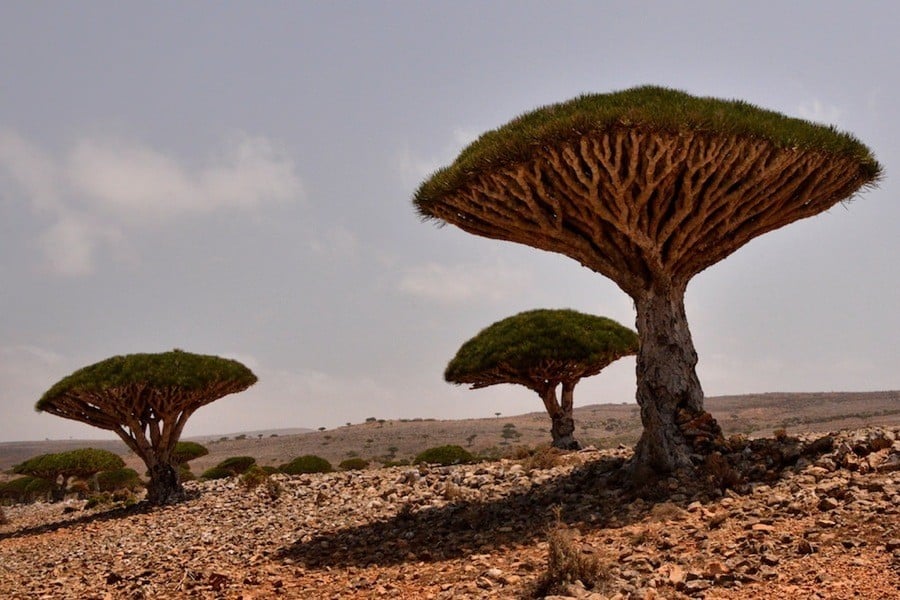
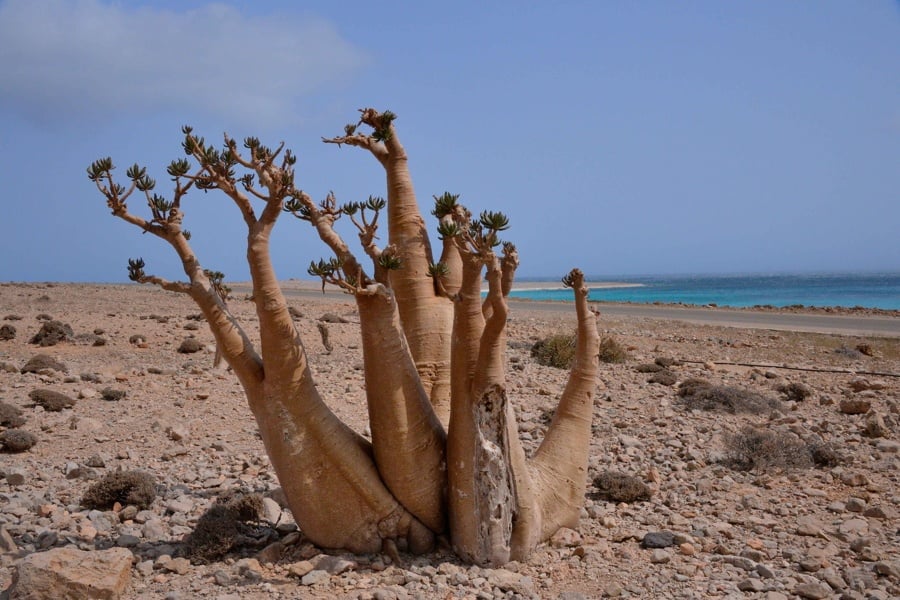
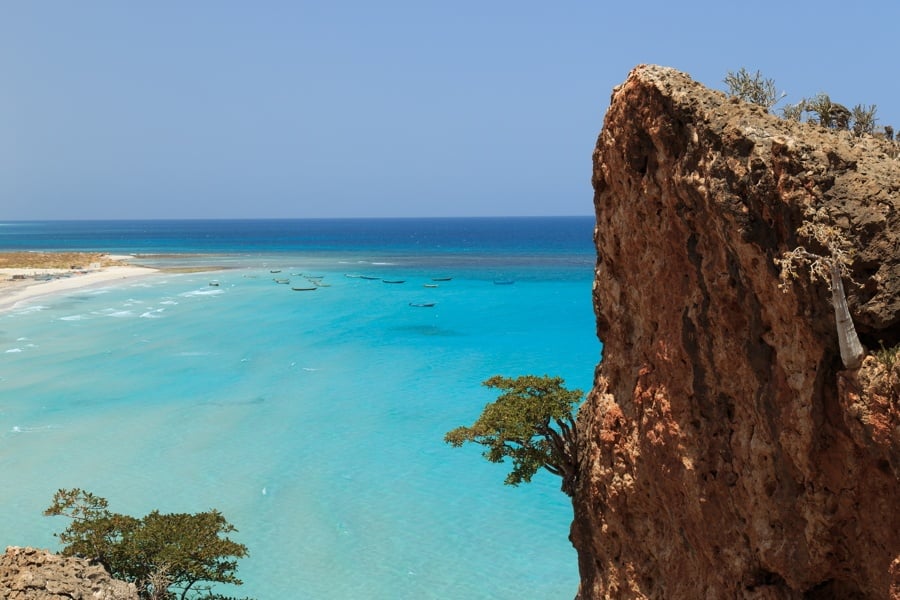
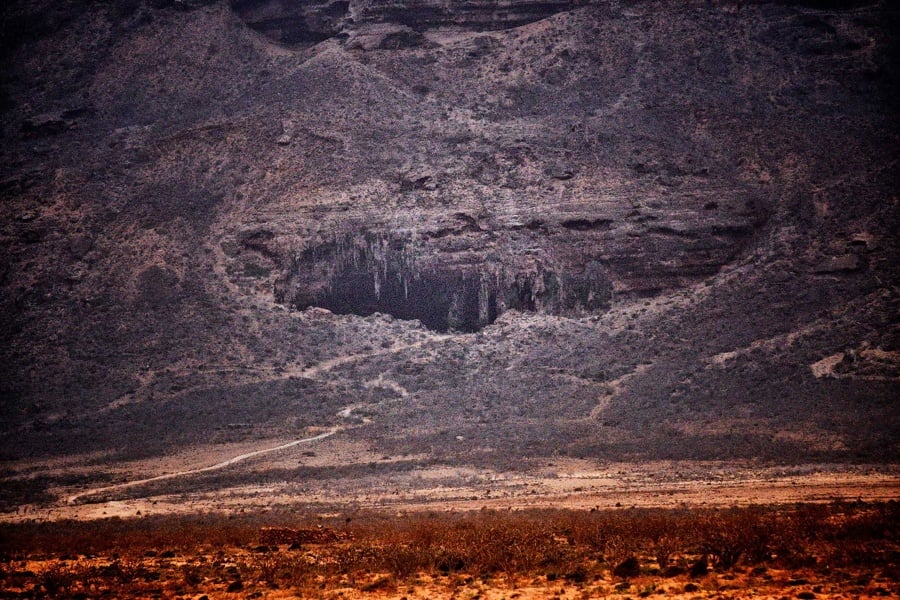
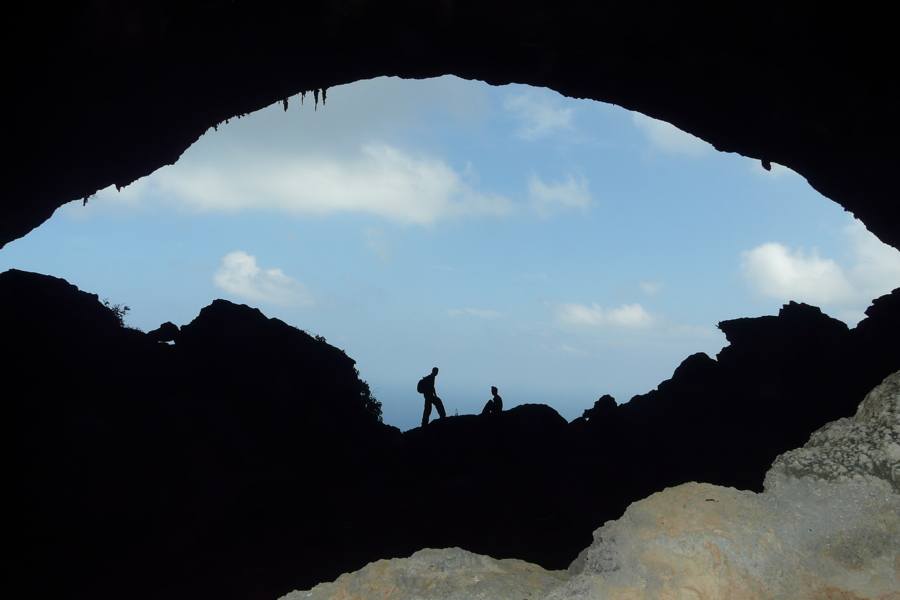
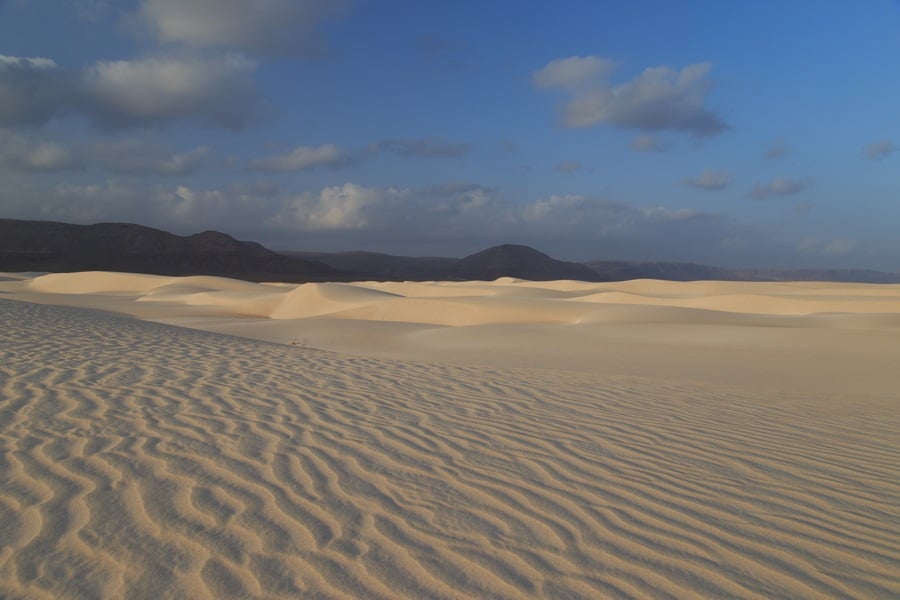





































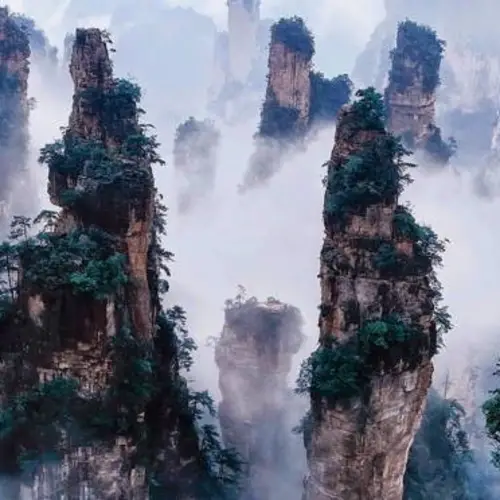
![Inside The Otherworldly Mendenhall Ice Caves Of Alaska [PHOTOS]](https://allthatsinteresting.com/thumb/500.500.https://allthatsinteresting.com/wordpress/wp-content/uploads/2018/05/glacier-pool.jpg)
